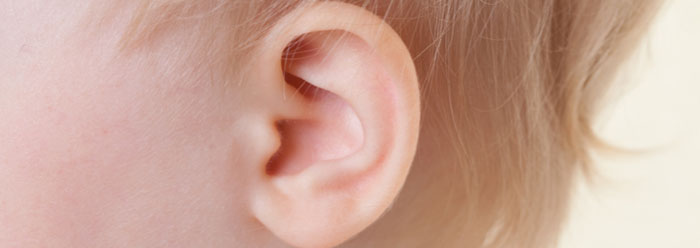People are able to groom themselves in a way so as to keep external parasites (fleas, ticks) and other irritants at bay. But what about the inaccessible recesses of the ear, with its delicate eardrum? This auditory canal must be open to the world in order to take in sounds, but that means it is also vulnerable to potential pathogens. Thankfully, the Creator has provided a remarkable defense against the tiny invaders that occasionally find their way in.
Although the subject of earwax is likely to be off-putting to many, it nonetheless shows God's very intelligent design. Like all bodily functions and secretions, there is a very important purpose to this waxy, brownish-yellow substance called cerumen, produced by approximately 4,000 glandular cells. Indeed, two researchers said recently, "Cell secretion is an important physiological process that ensures smooth metabolic activities, tissue repair and growth and immunological functions in the body."1 Earwax is far from being just a sticky secretion to eradicate. On the contrary, it is a highly complex substance that is designed to attract foreign debris and that contains anti-microbial proteins, squalene, long-chain fatty acids, and peptides (molecules consisting of two or more amino acids).
Earwax protects the ear by trapping dust particles, bacteria, fungal spores, sand, and dirt, preventing them from entering inner recesses and possibly damaging the ear. If they do gain a "foothold," disease-causing micro-organisms (e.g., E. coli) are subject to a veritable smorgasbord of defensive compounds such as lactoferrin, beta-defensin-1, cathelicidin, beta-defensin-2, lysozyme, MUC1 and secretory component of IgA (a major class of antibody) found in the cerumen.2 These are highly complex compounds that defy a naturalistic origin explanation. But not only does earwax attract and trap debris --its bitterness also repels insects, mites, and other creatures.
Still, most people see this sticky substance as something to purge from the ear canal or risk social exclusion. They invite serious auditory damage by inserting a potpourri of probes into the restricted passage, including toothpicks, Q-tips, car keys, and the like. But there is a purpose to earwax, as there is for all the secretions, tissues, and organs of the designed human body (Genesis 1:26-27).
This is also true when it comes to the auditory canal leading to the eardrum. As skin cells age, they cornify (convert to keratin) and are sloughed off. God designed the old, keratinized skin cells of the ear canal to peel off in a "c" shape --unlike the flattened skin cells on the rest of the body--so they will either literally roll out of the auditory canal (termed "epithelial migration") aided by the movement of the jaw, or will more easily become trapped in the cerumen.
Did the earwax produced by ceruminous cells and the complex antimicrobial molecules within the secretion, along with the unique manner in which old squamous cells slough off, come about through time, chance, and natural processes? Or was it by the purpose and plan of an all-wise Creator?3
References
- Gesase, A.P. and Y. Satoh. Apocrine secretory mechanism: Recent findings and unresolved problems. Histology and Histopathology. 18 (2): 597-608.
- Stone, M. and R.S. Fulghum. 1984. Bactericidal activity of wet cerumen. Annals of Otology, Rhinology & Laryngology. 93 (2): 183-186.
- Sherwin, F. 2006. "Ear Ye, Ear Ye." Acts & Facts. 35 (3).
* Mr. Sherwin is Senior Science Lecturer.
Cite this article: Sherwin, F. 2009. The Wax That Taxes Darwin. Acts & Facts. 38 (1): 12.




















